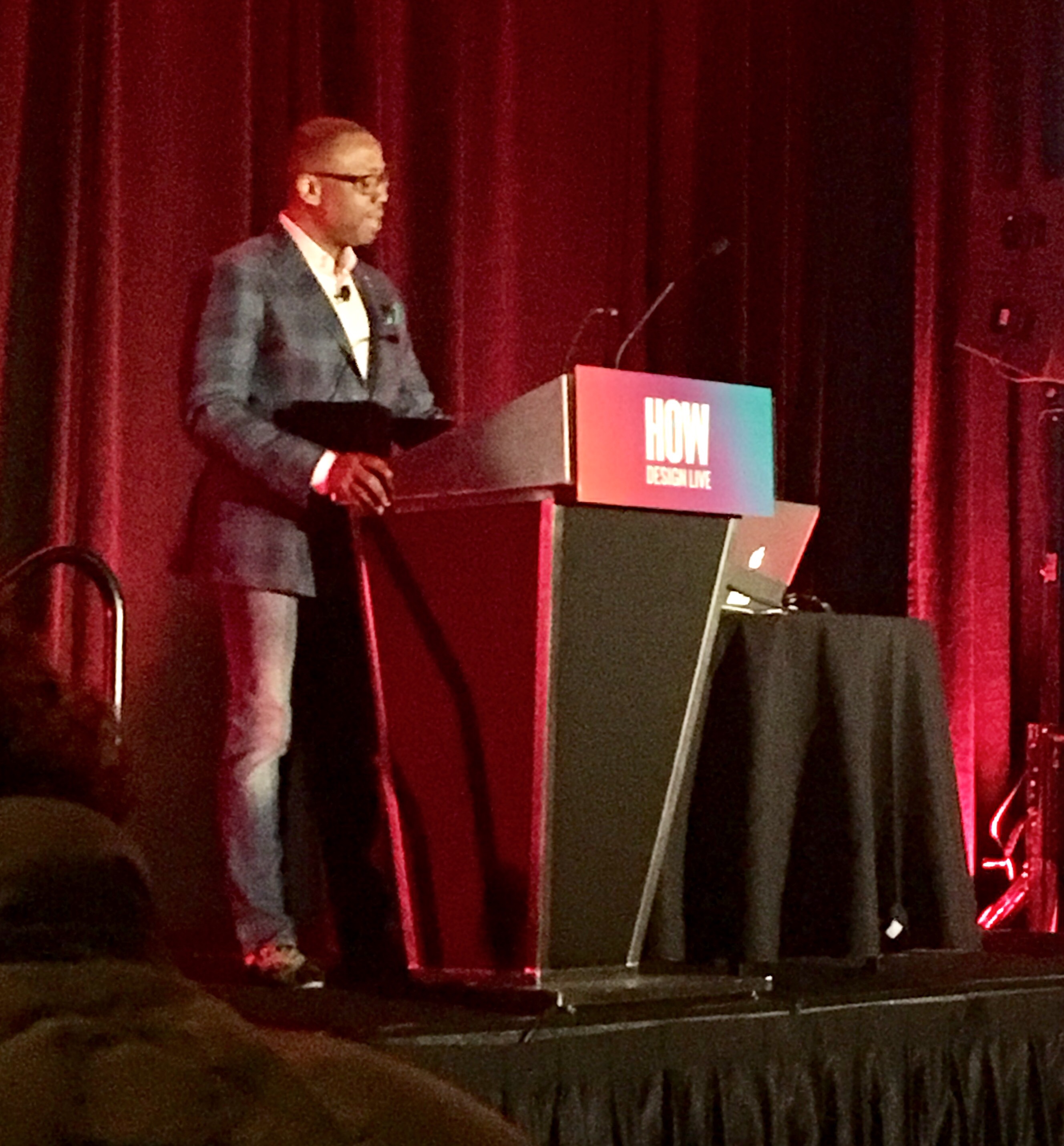Last week I had the pleasure of attending HOW Design Live in Chicago. Here are the top 10 takeaways from my time at the conference.
1. Design = Power
- Design is the power to shape the way others view the world.
- Design is strategy made visible.
- Design can lead to significant sales increases. During an awards ceremony,
the speakers reported sales growth when package designs were improved
- (ex: Lean Cuisine saw a 20% increase in their sales when they redesigned their packaging. Van Leeuwen Ice Cream saw a 50% increase.).

2. Instead of minimum viable product, focus on maximum f*cking love.
- Executives are realizing the power of design to influence sales. Design veteran Brian Collins mentioned this is troubling because many executives believe they’re better at design than designers are. The dilemma with this is that business people try to apply linear thinking to a creative non-linear process.
- Minimum viable product is a popular business practice. The issue with that, according to Collins, is that it lead to minimum viable thinking. His suggestion is to replace that with “maximum f*cking love.” Do really amazing work and be passionate about it. Work that is created with passion is far more impactful.
3. Design thinking is bulls*it. Design can’t be confined to one single methodology because it’s an abstract, non-linear process.
- Design is not a one-size-fits-all approach. There isn’t a set procedure or linear way to achieve creative results. Design is chaotic and abstract.
- Develop a methodology that works for you.
4. In-house design is on the rise.
- Companies are realizing the value of having an in-house design agency.
- Big brands like IBM and Target have made investments in building their design teams.
- In-house teams understand the brand better than agencies.
- It’s important to let the creative team be the go-between with agencies and freelancers vs marketing being the bottleneck.
- Designers speak the creative lingo and can more easily communicate intention.
5. Learn to play and pursue personal projects.
- Outside of work, look for ways to flex your creative muscles.
- Speakers like Gemma O’Brien (Australian mural/typographic designer) and Kelli Anderson (Brooklyn designer focusing on paper) showcased some truly amazing projects they developed in their personal time.
- The skills learned through personal projects can influence and improve the work you’re doing for clients.
- Activate the right side of your brain: learn to play. Dream like a kid (free of limitations, budgets, etc). This is the space in which truly creative ideas are born and flourish.
6. Automate “roadie” work.
- Designers want to be the “musician on stage,” but they must also do “roadie work” (tasks like procurement process, meetings, emails, etc). This can be similarly compared to lean manufacturing ideas of value-add and non-value add work.
- While creativity is non-linear, other aspects of a project are typically 70% repeatable processes (often the same routing, approvals, etc). Find ways to streamline these tasks to improve flow and make things scalable.
- Many tools/templates are available to help achieve this. The key to creating a new process and getting buy-in is to clarify value (otherwise, people will revert to old ways when the learning process is slow). You must prove value to get buy-in.

7. We must create time and space for great ideas and creativity.
- Author Malcolm Gladwell said it’s largely false to put deadlines on the creative process. We must create space and time for creativity. He used the example of Leonard Cohen’s song “Hallelujah,” which went through multiple iterations before becoming the popular song we know today.
- There’s truth in Gladwell’s thinking, but most businesses want designers to “crank out the sausage.” Quality/design is less important than results. Pick your battles.
8. A unified brand and values are quintessential.
- Starbucks said the dreaded design by committee isn’t necessarily bad if the brand is unified. The more people in the room the better. Good ideas can come from anyone and there’s value in inclusion. However, understand decision rights and listen to the experts.
- The old models of advertising aren’t as effective. Consumers behaviors have changed. Brands must be involved in the customer relationship and be an active member of the communities they serve.
- When values are clear, making decisions becomes easier. There should be a company wide mission and values, but this should also be at the team/individual level.
9. Be uncompromising when it matters; compromise when it doesn’t.
- Every project can’t be high quality, award-winning creative. Business needs arise that often require a quick response. Pick your battles, particularly with higher profile projects. Decide based on a tiered system. Should it be done (1) right, (2) quickly, (3) half-ass, or (4) not at all.
10. Strike a power pose and be a narrator for your ideas.
- TED speaker Amy Cuddy described how our bodies can change our behaviors and outcomes.
- We are our most confident/powerful when we are our present, authentic best self. When we feel powerful, our cognitive processes improve. We’re harmonious—our words match our body language.
- Practicing a high power pose can make people feel powerful (similar to the way smiling can trick the body into feeling happy). When we feel powerful, we expand. An example of power posing can best be found in the New Zealand rugby tradition of Hauka. Additionally, across world cultures, people expand after winning (vs people who contract and shrink when they lose).
- Great work does not speak for itself. All work needs translation. You need to help the client understand why an idea is good for the intended consumer audience (the idea isn’t intended for the client; it’s for the consumer). Client’s often think with their left brain and don’t have the training and “spidey-sense” that designers do. The best way to convince the client is through narrative; tell a story.
 About the Author: Matt Stevens is an in-house designer at Raleigh-Durham International Airport (RDU) and serves on the community board for AIGA Raleigh. At RDU, Matt is a jack of all trades, managing the website, digital signage, printed materials, photography and video production. In his spare time he enjoys exploring the Triangle region, traveling, playing PS4 and spending quality time with his family.
About the Author: Matt Stevens is an in-house designer at Raleigh-Durham International Airport (RDU) and serves on the community board for AIGA Raleigh. At RDU, Matt is a jack of all trades, managing the website, digital signage, printed materials, photography and video production. In his spare time he enjoys exploring the Triangle region, traveling, playing PS4 and spending quality time with his family.
Linked In | Twitter | Website